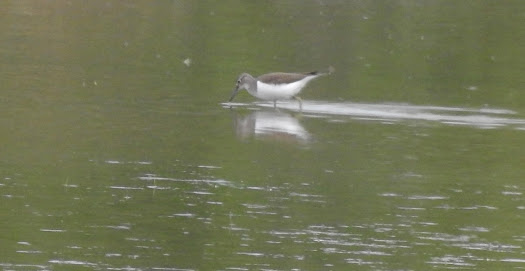The last few days have been pretty dire at Morton Bagot. I slogged around on Friday without seeing anything of note, and I gather John C was equally unsuccessful yesterday. So this morning I was fearing it would be more of the same, but you can never tell.
An early mini boost came from a showy Sedge Warbler sitting in a hedge while I waited for Dave to join me.
.jpeg) |
| Juvenile Sedge Warbler |
Once we got going, a further upside was a singing Grasshopper Warbler, and two Little Egrets in the pool field. The latter had also been present on Friday.
As we approached the flash field Dave's phone pinged with news of a Black-tailed Godwit at Marsh Lane. I could tell he wasn't happy. So it was all the more uplifting when I scanned through the trees screening the nearest flash and spotted an adult Black-tailed Godwit standing in its shallow centre. The first here since 2021.
 |
| Black-tailed Godwit |
Aside from this bird we could only see a couple of Green Sandpipers and a few Lapwings, but that one arrival was all it took to elevate the spirits.
In fact there was a little extra to see. On the Kingfisher Pool (still being scraped away by the land-owner for purposes unknown) we spotted a Kingfisher. I have subsequently noticed it is ringed, and as Tony K caught one at Netherstead last weekend, it is likely to be the same bird.
 |
| Kingfisher on the muddy bank |
Our return along the Morton Brook brought us a few more warblers and plenty of butterflies, particularly Commas, Peacocks and Red Admirals, but the best was saved for Netherstead where a Holly Blue posed, uncharacteristically showing its upper side to good effect.
 |
| Holly Blue |
This may be my first here this year.
Our morning was curtailed by my desire to get back home to watch the fourth day of the Ashes. Right now that is looking like an unnecessarily hasty decision.





































